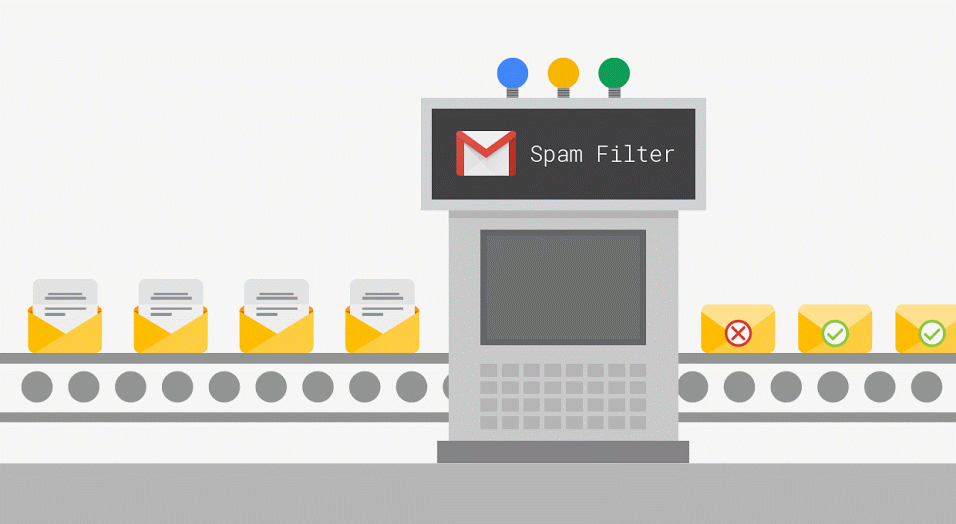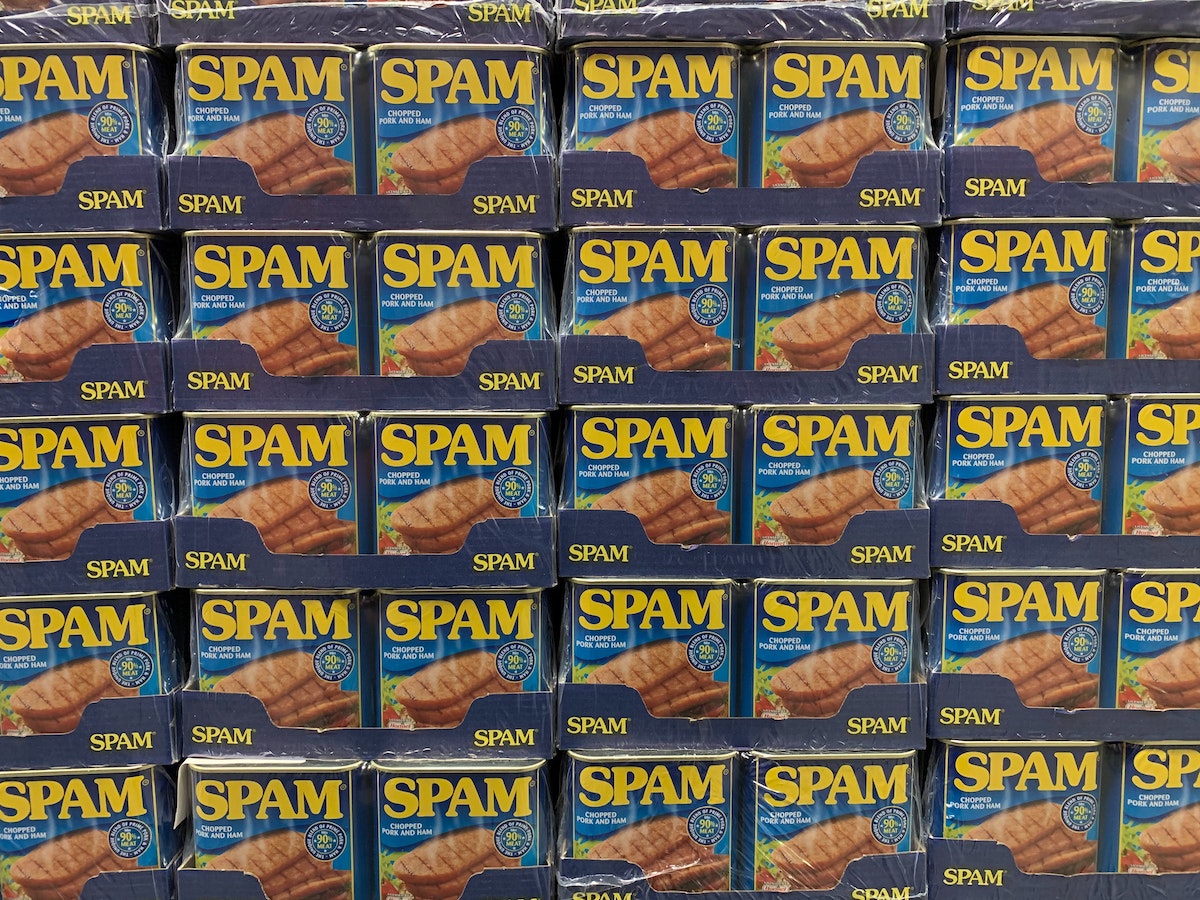Why Are Your Emails Landing in Spam and How to Fix it?
It happened again, right? You tried sending the email and bam! It went straight to the receiver’s spam box. And then you might have reviewed your content and email hygiene as to what went wrong? But no luck in finding the reason for the same!
Quick Links
Email deliverability and spam filters have become more refined with technology. And along with it, every business and digital marketer has to keep in mind the laws and compliances before sending out any marketing message through email. I would quote a little example here.
According to the CAN-SPAM Act by the Federal Trade Commission,
“Your message must include a clear and conspicuous explanation of how the recipient can opt-out of getting an email from you in the future”.

(Source)
This is just a drop in the ocean. To give you an insight, there is not one but dozens of reasons for your email to land in the spam box. I know, it’s hard to identify if you start scanning from scratch.
But by the end of this piece, you will have identified potential areas to conduct your research and analyze the reason for your emails landing in spam. Also, I will suggest solutions to rectify the situation.
Let’s dive into it straightaway.
#1 The Hygiene Factor
Checking the overall hygiene of your email not only entails the subject line or the email copy but many other touch-points as well. Let’s take a top to bottom approach.
Problem A:
Firstly, talking about the subject line, you should avoid writing the same words as actual spammers do. There are instances when the spam filters brand you as a spammer due to your choice of words. Please don’t do this. You are not only ruining your chance to sound authentic but also exhausting your chance of engaging your subscribers.
Solution:
Never. I am repeating. Never use a language that indicates a monetary benefit. For example: ‘It’s completely free”. “You have won, Congratulations”. Marketers become so frustrated with their emails landing in the spam box that they resort to the last option by mentioning directly in their subject line- “Promise you. It’s not spam”.
But let me tell you, this phrase will not help you in any way. Instead, use subject lines that portray your purpose. Be subtle yet clear on what you have to offer. For instance: “A deal you can’t say no to”, “You just can’t resist this offer”.
Problem B:
We are now entering the email body. If you sprinkle the above-mentioned words in your email body then you are paving your path towards the spam folder. It’s not only limited to your copy but the images you incorporate.
If you put bizarre sized images without alt texts then boy, you are attracting the spammer alert. Apart from images, the spam filter also analyses the links you put in your email. Any suspicious link will cost you more than you can imagine. Also, “Each separate email in violation of the law is subject to penalties of up to $43,280” (CAN-SPAM Act)
Solution:
Read your email body and check for the words that mislead the customers in any way. Employ neutral and subtle ways to describe an offer. Follow a definitive image aspect ratio. For instance, most of the marketers go for 360 x 640 px for it works fine for both, mobile and desktops/laptops.
For practice, don’t use shortened URLs. Actual spammers rely on link shorteners to bait the audience. Recheck your links and ensure that they are not redirecting to a malicious or deceitful URL.

(Source)
#2 The Authentication Factor
I would not enter into too many technicalities and try to keep it simple. You as a sender have to go through various authentication tests. Let’s see what they are and how they function.
Problem C
There are various authentication pillars like DKIM (DomainKeys Identified Mail), SPF (Sender Policy Framework), DMARC (Domain-based Message Authentication, Reporting & Conformance), etc. that validate that your emails are authentic.
DKIM is basically responsible for checking your domain authenticity. SPF comes into picture if one uses a forged email address belonging to someone else. Meaning, it is a text record that is stored with the provider of your domain name system which consists of all the IPs and email servers that can send emails on behalf of your domain.
DMARC is more of a declaration from the sender’s domain validating the above-mentioned authentication factors that they are aware of the two, thereby, giving permission to deliver only the authenticated emails to the receivers. If you fail these authentication factors, it can contribute to your emails landing up in the spam folder. Use a free DMARC service to check your situation.
Solution:
Now the first problem is directly linked to your domain. If your domain is comparatively new or you don’t have any website on that domain, then your email might go directly to the spam folder. Experience and age matters. Apply the same to your domain. If your domain has maintained a good reputation over the years you might pass the email authentication test.
In case you have just started and your domain is comparatively new along with your website and hosting plan, then do not send too many emails in one go. These authentication pillars will mark this behavior as spam.
Talking about SPF, do not use more than 9 or 10 email servers and IPs to send emails via your domain. This is somewhere for the benefit of the sender as well such that your domain cannot be misused, therefore, consider it a healthy authentication factor. DMARC should not come as a problem if you have the above two correct.

(Source)
Problem D
If you employ third-party email service providers (ESPs) to send emails then you have to look at a couple of things. These service providers differ from mailbox providers like Gmail or Yahoo. The latter usually do not require authentication as compared to the former.
To give an example, marketers employ different email service providers to send emails. While many are aware of the widely used tool Mailchimp, you should also look out for other alternatives in the market. The main reason for carrying out this research is for your own good. The tool that you leverage should be in perfect sync with your marketing needs. Therefore, look out for the features, ease of use, deliverability, and budget.
ESPs work in two ways in relation to the authentication factor. First, they use your domain to deliver emails with your permission. Second, they use their own domain to send authenticated emails. The problem arises if you are using a local or inefficient ESP. This is because the actual spammers leverage these ESPs to send emails.
Solution:
The answer is quite simple. Don’t just trust any ESP out there. Conduct your research and go for authentic and reputed ESPs that actually care about your email deliverability in accordance with the authentication factors and necessary compliances.
It’s not a simple choice. There are ample amazing tools out in the market. Your task is to choose an ESP that meets your business requirements. For example, Mailchimp has a huge customer base but is an expensive tool. Therefore, if you have budget constraints, you have to give a second thought.
It becomes essential for you to go through all the minute details if you are planning to leverage an email service provider. An insider’s tip: Don’t hesitate to take free-trials of any email marketing tool.
#3 The Law Factor
And people think sending emails is easy! Phew! It’s actually a lot of work if one goes to read the SPAM laws according to different countries. Anyway, let’s get on to this final one.
Problem E
This problem is entirely related to the lack of awareness among email marketers regarding SPAM laws and compliances. I mentioned the CAN-SPAM Act in the beginning. There are certain more SPAM laws like GDPR (General Data Protection Regulation), CASL (Canada’s Anti-Spam Legislation), and more. These laws are pretty strict and failure to comply can result in hefty penalties.
Solution:
Although I cannot by any means write each law here for all the laws cater to different countries. If you have a global business, then you have to comply with all the laws according to different geographies. But here are some pointers you can take note of:
- Provide an ‘Unsubscribe’ Link, both at the header and footer of the email
- Include your company’s address in the footer of the email
- This is silly but, never leave your subject line blank
- Don’t send heavy emails, that is, preferably less than 100 kb
- Take care of Broken HTML. Avoid sending the same in your email
- Avoid using a scripting language such as JavaScript
Although there are many more guidelines and regulations to follow. Do have a look at the SPAM laws according to the geographies you are operating.

(Source)
A Wrap-Up
So folks! It’s a wrap-up from my side. I hope this helps to mend and fix your SPAM situation. Although there can be many other possible reasons for your email to land up in the spam folder. It may range from the choice of design, template, font to complex factors like domain issues, or compliances. But keep up the good work and consider all the touchpoints of email marketing.
This blog is written by Shivani Srivastava. A content marketer by heart, Shivani is passionate about writing anything in the field of the technological landscape. She’s written this guest blog for SendX: Email Marketing Software.
What Is WooCommerce Product Slider and Why Your Store Needs It
Why Do Product Images Matter So Much in Online Stores? When someone visits an online store the…
0 Comments9 Minutes
How to Streamline Your Customers’ Shopping Experience?
The goal for any online store is to make shopping as smooth as possible. When visitors move…
0 Comments8 Minutes
Strengthening Brand-Customer Relationships Through Gamified Loyalty Programs
Creating lasting connections with customers has become increasingly vital as the marketplace grows…
0 Comments6 Minutes
How to Use SEO and SEA Together in Search Engine Marketing
In digital marketing, search engine marketing (SEM) plays a critical role in improving online…
0 Comments10 Minutes
Content Marketing Growth Hacks: Real Shortcuts to Drive Traffic
Are you still lagging in content marketing? Sticking to these old strategies seems…
0 Comments10 Minutes
How to Build a Strong Local Following Using Social Media Marketing
In the days of likes, shares, and stories, local businesses have a golden opportunity to create…
0 Comments9 Minutes
Why WooCommerce is the Best Choice for Your Online Store?
WooCommerce stands out as a top option for anyone looking to build an online store. This platform…
0 Comments8 Minutes
How to Use AI-Powered SEO Tools for WordPress eCommerce
SEO is a critical factor in the success of any e-commerce WordPress store. As competition…
0 Comments11 Minutes








